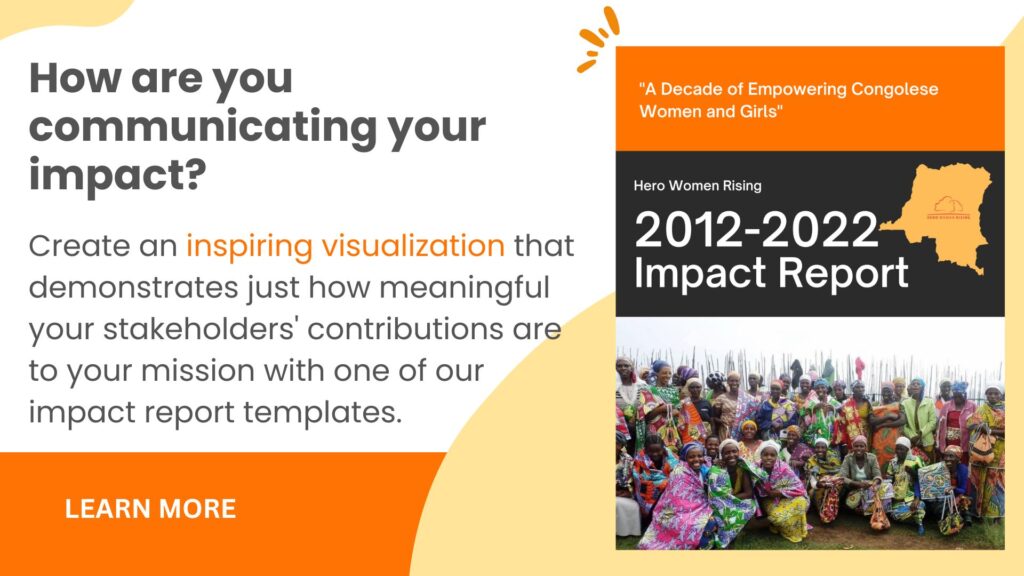Entrepreneurship is a thrilling journey, but it can also be overwhelming. Between running a business,...
READ MOREThe Power of Impact Reports: Visualizing Nonprofit Impact for Stakeholders
Date: April 17, 2024
An impact report is not just a document; it's the heartbeat of a nonprofit's mission, pulsating with the stories of change, the metrics of progress, and the spirit of accountability.
AMA Consulting Group LLC
In the world of nonprofits, the impact is everything. It’s the heartbeat of their mission, the measure of their success, and the driving force behind every initiative. But how do these organizations effectively communicate their impact to stakeholders? The answer lies in the power of impact reports.
An impact report is more than just a document; it’s a story—a narrative that illustrates the change, progress, and difference a nonprofit is making in the world. By compiling data, stories, testimonials, and visuals, impact reports provide stakeholders with a comprehensive understanding of the organization’s achievements and the tangible outcomes of their contributions.
Here’s why impact reports are indispensable tools for nonprofits:
Transparency and Accountability:
Transparency builds trust. Stakeholders, including donors, volunteers, beneficiaries, and the public, want to know where their resources are going and what results are being achieved. Impact reports offer a transparent account of a nonprofit’s activities, finances, and outcomes, fostering accountability and credibility.
Demonstrating Effectiveness:
Nonprofits exist to solve problems and create positive change. However, the effectiveness of their efforts can be challenging to gauge without concrete evidence. Impact reports quantify the results of programs and initiatives, showcasing the real-world impact on individuals, communities, and causes. Whether it’s the number of lives touched, environmental improvements, or policy changes enacted, these reports provide tangible evidence of effectiveness.
Inspiring Stakeholder Engagement:
People want to be part of something meaningful, something bigger than themselves. Impact reports serve as powerful tools for engaging stakeholders by highlighting the role they play in driving change. When stakeholders see the impact of their contributions, whether through donations, volunteer hours, or advocacy efforts, it reinforces their commitment and motivates continued support.
Strategic Decision-Making:
Financial Sustainability: A well-executed fundraising strategy provides nonprofits with the financial resources needed to fulfill their mission and sustain operations over the long term. It enables organizations to weather economic uncertainties, navigate unforeseen challenges, and seize opportunities for growth and impact.
Amplifying Advocacy Efforts:
Advocacy is a cornerstone of many nonprofit missions. Impact reports not only showcase the outcomes of programs but also amplify the need for continued support and action. By sharing compelling stories and statistics, nonprofits can effectively advocate for policy changes, raise awareness about pressing issues, and mobilize support for their cause.
Cultivating Donor Relations:
Donors are the lifeblood of nonprofits, providing the financial resources necessary to sustain and expand their work. Impact reports are essential tools for donor stewardship, allowing organizations to express gratitude, demonstrate the impact of contributions, and keep donors informed about the progress being made. A well-crafted impact report can strengthen donor relationships and encourage continued generosity.
Leveraging Partnerships and Collaborations:
Collaboration is key to tackling complex social, environmental, and economic challenges. Impact reports not only showcase the achievements of the nonprofit but also highlight the contributions of partners, collaborators, and supporters. By acknowledging the collective effort and impact of all involved stakeholders, nonprofits can strengthen partnerships and attract new allies.
In conclusion, impact reports are invaluable assets for nonprofits seeking to communicate their impact to stakeholders effectively. By providing transparency, demonstrating effectiveness, inspiring engagement, informing decision-making, amplifying advocacy efforts, cultivating donor relations, and leveraging partnerships, impact reports play a vital role in advancing the mission and vision of nonprofit organizations. As the saying goes, “What gets measured gets managed.” Impact reports not only measure impact but also empower nonprofits to manage it strategically, ultimately driving positive change in the world.
The Power of Impact Reports: Visualizing Nonprofit Impact for Stakeholders
In the world of nonprofits, the impact is everything. It's the heartbeat of their mission,...
READ MOREUnlocking Impact: The Importance of Nonprofit Fundraising Strategies
In the nonprofit sector, where missions are noble but resources are often scarce, the importance...
READ MORE


